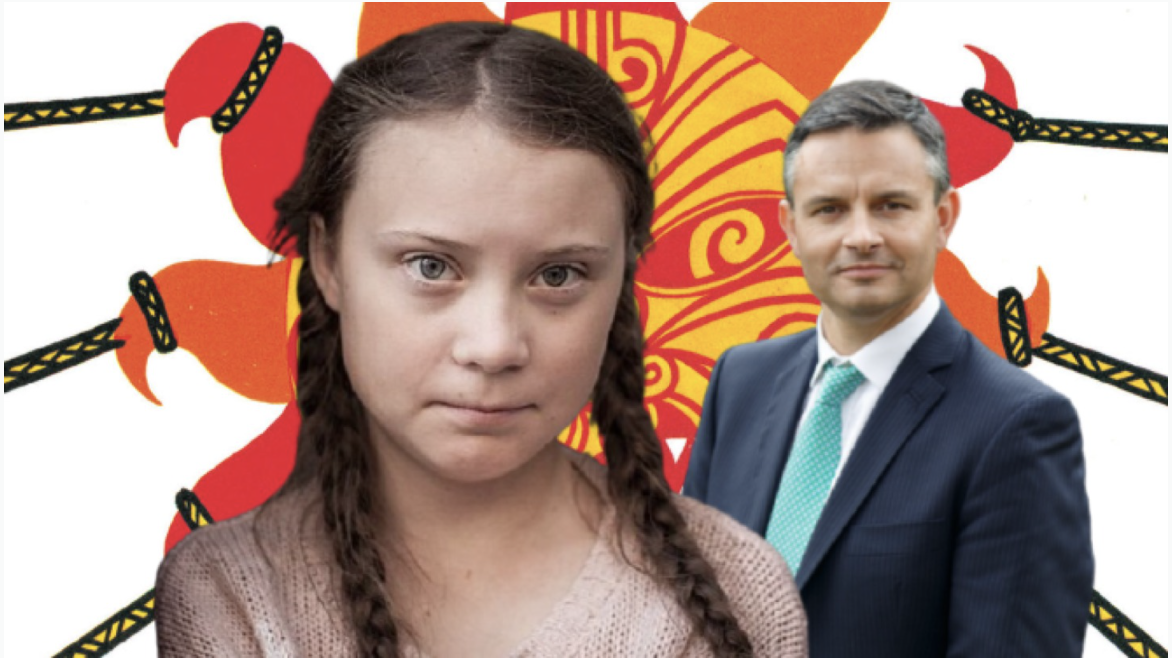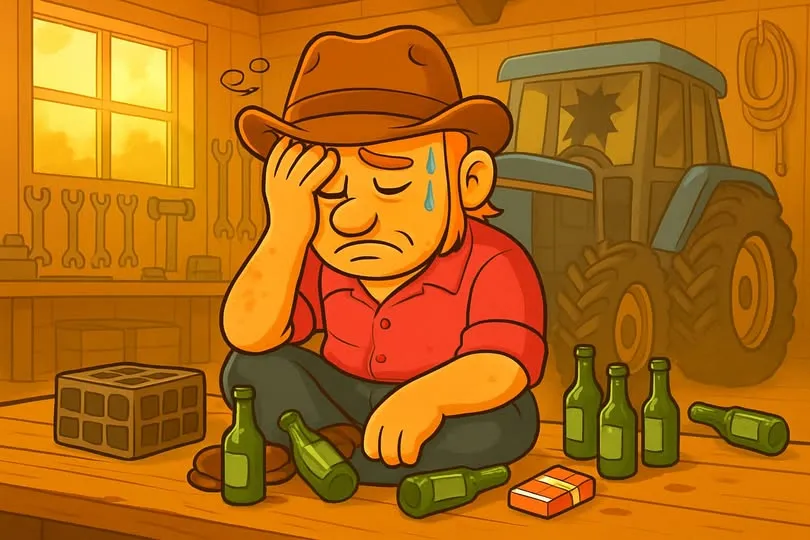James Shaw, co-leader of the Green Party, believes people can reduce the world’s temperature. Perhaps this thinking comes from a Maori legend: How Maui Slowed The Sun.
Maui was annoyed that the sun went down too quickly, and he had to eat his meal in the dark. His village gathered flax and plaited a pile of long ropes and said a karakia (incantation/prayer) over the ropes for protection. Maui and his brothers hid and arranged the ropes into a noose. The sun rose and the intense heat caused the brothers to scream, but Maui commanded them to stay. They tightened the ropes, and the angry thrashing sun was hit a few times with a jawbone until the sun tired and was released from the ropes. Maui commanded the sun to slow down – “No longer will you dictate the length of our days – from now on you will travel slowly across the sky!” From then on, the sun drifted slowly across the sky.

Shaw is one of the representatives going to Glasgow for COP 26, the UN Climate Change Conference. For almost three decades, world governments have met nearly every year to forge a global response to the climate emergency. Greta Thunberg arrived surrounded by police (bodyguards), blaming everyone, especially the politicians, for not doing enough. Our politicians shrewdly announced new goals just before leaving NZ for Glasgow.
Targets no doubt will be set after almost two weeks of discussions to stop the world from getting unbearably hot. The message is the planet is at a tipping point and cannot survive unless dangerous CO2 emissions are curbed. $Billions have been given by governments to cool the earth but, according to the climate consensus scientists, the graphs continue to climb upwards. The science is settled. Man-made issues are causing global climate change and they are out of control.
The problem is that science is far from being settled, according to others. One such expert close to home has a different view. David Shelley, NZ writer and retired Geology lecturer from Canterbury University writes:
The Fact is that our Earth has Ice in its Veins.
Climate change is a defining issue of our time, especially for young people who are persuaded that we are doomed unless urgent action is taken on carbon emissions. Activists, with some success, are demanding climate emergencies be declared around the world, making those demands on the basis that temperatures are at record highs, glaciers and sea ice are melting at unprecedented rates, and sea levels rising dangerously.
A cursory examination of the geological literature shows that the first two assertions are simply not true, and that rising sea levels are par for the course.
To assert that today’s temperatures are record highs is mischief-making of the highest order. Earth has been much hotter (up to 10C hotter) for the vast majority of geological time. Jurassic Park was very hot, and when the dinosaurs suddenly died out 65 million years ago, the succeeding age of mammals was similarly very hot. The last million years (a mere heartbeat on the geological time-scale) has been atypically cold, with extraordinarily large fluctuations in temperature. This period can be described as a series of 100,000-year-long cycles of dangerously cold ice ages (10C colder than today) and warm interglacials (where we are now). The interglacials are relatively short, usually a few thousand years, and we are already 12,000 years or so into this one. The record would suggest we might soon descend into another dangerously cold glaciation.
Geologists know temperatures were higher than they are today during the Holocene maximum, 5000 to 9000 years ago in our current interglacial, and higher (by at least 2 C) in two of the last three interglacial periods.
Sea levels are rising, but just 12,000 years ago, at the end of the last glaciation, sea levels were as much as 140m lower than today, and they then rose dramatically as we entered this interglacial. Sea levels were significantly higher than today just a very short time ago. Sea levels were also significantly higher in the last interglacial 125,000 years ago; Florida Keys, for example, is the remains of a coral reef there.
The Australian, 8 July 2019
In October, prior to the COP26 Conference, Newsroom reported that Tsinghua University and the Massachusetts Institute of Technology hosted the Sino-American Youth Dialogue on Climate Change (SAYD). They warned that the earth will hit its tipping point earlier than expected if we fail to keep temperature rise under 1.5 °C. The aim is to offer a platform for young people from China and the U.S. to put forward ideas and suggestions for the COP26 to address climate change and sustainable development.
This cross-culture exchange was set up in April 2021, when China’s Special Envoy for Climate Change Xie Zhenhua and US Special Presidential Envoy for Climate John Kerry met in Shanghai. Chinese and American young people are being asked to come up with ideas. There were offers of modest cash rewards for those making the most compelling arguments. Ironically, at the same time, the Chinese are funding coal projects in developing countries such as Indonesia ($1.5 billion supply deal) and Mongolia. While environmental degradation and pollution need urgent worldwide attention, China will continue to open coal-fired power plants at an average rate of one a week over the next four years.
The world’s second largest economy is facing a power shortage owing to a combination of factors. They include: extreme weather (massive snow storms), surging demand for Chinese exports and a national push to reduce carbon emissions, as set out by President Xi Jinging.
CNBC 11 October 2021
David Shelley not unexpectedly has his critics. He does not agree with the message of a Maori legend that humans are powerful enough to influence the sun. Temperatures have fluctuated for millennia.
Shelley can be heard in Leighton Smith’s podcast 26. He finishes his newspaper article with:
The very idea that we can stop climate change is barking mad. Climate change is inevitable, as geology has always shown.
Footnote:
- 1992 Kyoto Protocol was an international treaty designed to curb the release of greenhouse gases, based on scientific consensus that global warming is occurring and that human- made CO2 emissions are driving it .
- 2015 The Paris Agreement (Under the United Nations Framework Convention on Climate Change), also called Paris Climate Agreement or COP21, which aimed to reduce the emission of gases that contribute to global warming.
- 2016 The Paris Agreement has been signed by 195 countries and ratified by 190, as of January 2021.









